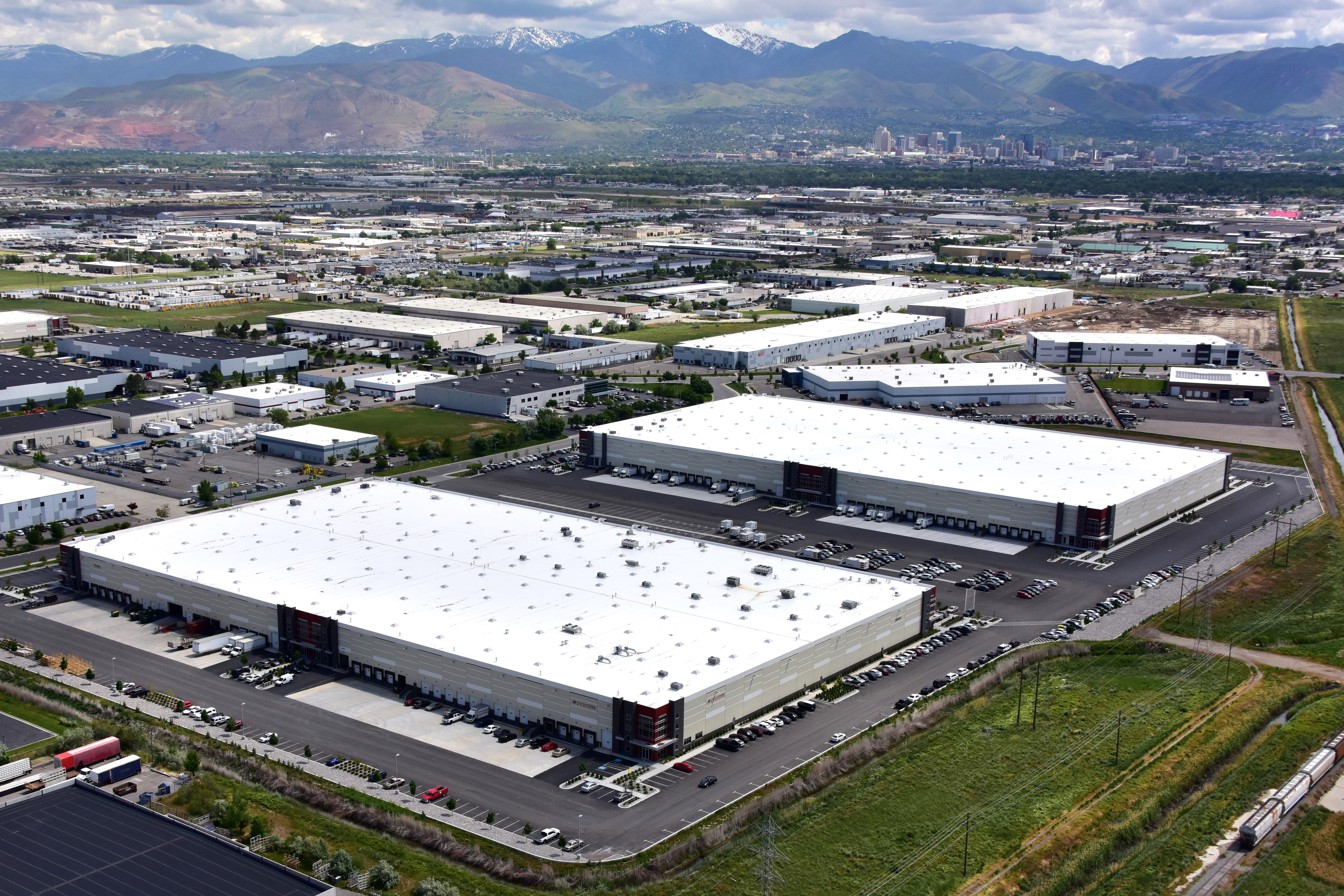A Yield of Diamonds: A Conversation with Carbon County Leadership

September 18, 2020
They say carbon under pressure produces diamonds. With a changing industrial landscape and the effects of a pandemic, Carbon County – like much of rural Utah – is experiencing new pressures. Despite these challenges, there is a sense of optimism, collaboration, and excitement in the region. We caught up with county commissioners Larry Jensen, Casey Hopes, and Tony Martines, along with Rita Vigor, Director of Economic Development, to find out what’s happening.
You’ve had two major corporate expansion announcements in the last year? How do you promote Carbon County to companies looking to move operations there?
LJ: In the last year, we’ve had two large business expansion announcements, both of which had EDCUtah involvement. One is Intermountain Electronics and the other is SME Steel. The latter has been put on hold for time being due to COVID-19, but we’re confident both projects will bring hundreds of jobs to the Carbon/Emery area.
SME moved into a vacant facility here. The company removed the old equipment and has done over $1 million of remodeling, so they are ready to go when steel orders come back in volume.
Our strengths that have made the big projects possible are our workforce and the resilience of our people. Our blue collar workforce…they know how to work. They are good hard workers who are coming out of the coal mining and power plant industries. Companies see a culture here that’s different from the cultures they see elsewhere.
TM: The cost of living is lower here, the air is cleaner, and we’ve got quality of life and recreation. We’re well situated halfway between Salt Lake City and Moab.
We’re open for business and more progressive than in the past. We’re willing to welcome different kinds of businesses. We’re in a bit of a flux now, but as a matter of fact, we’re looking at a 70 megawatt solar project in Wellington.
Speaking of energy, as coal and power generation industries downshift, how has the County adapted?
CH: Especially in the last few years, we’ve done a lot of relationship building between the county and our cities, and with our sister county, Emery County. What benefits Emery benefits us and vice-versa.
Both commissions, we’ve taken the attitude that we don’t want lines between our counties – we’re one valley and we want to help each other. That cooperative effort is blossoming beyond the counties to the cities. That’s a selling point for companies looking at the region.
That relationship building is why we are starting to see success. We’re trying to bring the public and private sector together to get things done. At the county level, we’re working with partners such as EDCUtah, Southeastern Utah Association of Local Governments, Coal Country Strike Team, the Utah Association of Counties, Silicon Slopes East, Seven County Coalition, and others. It’s been a good thing for us to gain momentum. People are starting to take note of what’s happening.
Employees that work at Intermountain Electronics are from both Carbon and Emery County. As Intermountain Electronics expands, they will need a larger supply chain. Some of those supply chain companies are existing and some will need to be stood up. Emery County was enthusiastic about working together not just for the workforce benefit but also for those potential supply chain opportunities.
LJ: We’ve also put together local councils that have brought ideas to county government and widened our view. There are a lot of people working together, a vast group of people to answer questions and solve problems.
You can’t drive through Carbon County without noticing the infrastructure. Talk about the advantages that brings to the County.
CH: A selling point is our infrastructure. With Route 6, we have a direct truck route from Salt Lake City to Denver. Our power generation is inexpensive. We have four or five railroad spurs, which is why the Utah Inland Port Authority is looking here for a potential satellite port.
Fiber is a key component. Emery Telcom is a terrific partner and has brought high-speed fiber to every home and business in Carbon and Emery Counties. We have faster broadband than they have in some parts of Salt Lake City. People will move where they want to work, not where they have to work. Roger Brooks said this is the first time in American history that people are moving for quality of life and taking a job with them vs. moving for a job and taking whatever quality of life comes along with that relocation. Because of our technology, the ability to work remotely is driving a different conversation.
Our airport – while it doesn’t have commercial flights – is one of the best rural airports. At 8,316 feet, we have the third-longest runway of General Aviation airports in the state, and we have three directional runways. We have a flight instruction program through USU Eastern. There is a lot of development acreage and a lot of room for expansion, via a master plan we completed three years ago. There’s room for aeronautic and non-aeronautic business expansion.
All this infrastructure gives us many advantages over other rural communities.
LJ: USU Eastern is a critical piece of the puzzle and a real advantage for Carbon County. Over the years, Utah State University Eastern trained the workforce for the mines and power plants. Now that there’s a shift, the university is very eager to adapt and restructure curriculum for any industry that’s interested in our area. They are targeting a half a dozen industries and putting together internship programs. The high school is heavily engaged with up to 60 students involved.
What are some intangibles or lesser-known elements of business friendliness in Carbon County?
RV: I think I have the three best commissioners in the state. Each of my commissioners brings a unique set of skills and knowledge and willingness to support my efforts. I’m happy to tell anybody that I don’t engage in any conversation with a business without involving my commissioners because they bring a perspective that I don’t have. I also engage my Planning and Zoning department early on. It’s a problem-solving mindset that companies will find here. If I don’t know the answer, I will find someone who does.
We’re also being proactive. We have worked with the school district to create a better working relationship to have a more responsive approach for incentives.
LJ: One other highlight – for any business looking to come here, there’s a commitment by our Planning department to issue conditional use and building permits in a very short window, usually in 30 days. We offer the ability for somebody to be up and running pretty quickly.
Bonus Round - Rita’s quick hits:
- Investment activity:
- Wellington Microtech purchased land and is expanding. Their business is taking vegetable oil, processing it into biodiesel, and selling it to California customers.
- One property owner is working with a builder to put up a 60-home development for affordable housing. The houses will range from $170,000 to $220,000 with five house plans.
- An investor from Colorado sees potential in the area and bought the local raceway. They had their first race there in July.
- We’re creating a better experience for visitors to Nine Mile Canyon with better signage and an app that will provide a guided tour. (As a matter of fact, Commissioner Jensen dug some of the holes for new signs himself.) The visitor experience can tie to economic development.
- There’s an RV park in Helper that represents a $7 million investment. The owners first came to the area as tourists attending the Helper Arts Festival.
- Future in Design is another success story. They are an innovative non-profit in Price with a mission to train people in manufacturing. They are expanding their services, hiring, and manufacturing a lot of face masks and other PPE for the State.
- Our local Association of Governments has been working with the Silicon Slopes East group to add a co-working space to the Business Resource Center in downtown Price. The group is bringing similar programs to the libraries in Emery County. The group also brought 15 tech leaders and investors to town for a tour. The two counties showed off their golf courses, took an ATV ride in the Wedge and catered a dinner out there. The visitors were super impressed.
- Pilot programs - Price has been designated a Main Street pilot program with GOED. And the Huntsman Cancer Institute is piloting an at-home chemotherapy program with Carbon, Emery, and Grand Counties.
- SITLA got involved and got our Mega Site program going. There are now two sites that have received Stage 1 certification. It’s another example of partnership.
- The pandemic has certainly thrown a wrench in things but it’s not going to keep us down!
For more information, visit https://www.carbon.utah.gov/Business/Economic-Development






